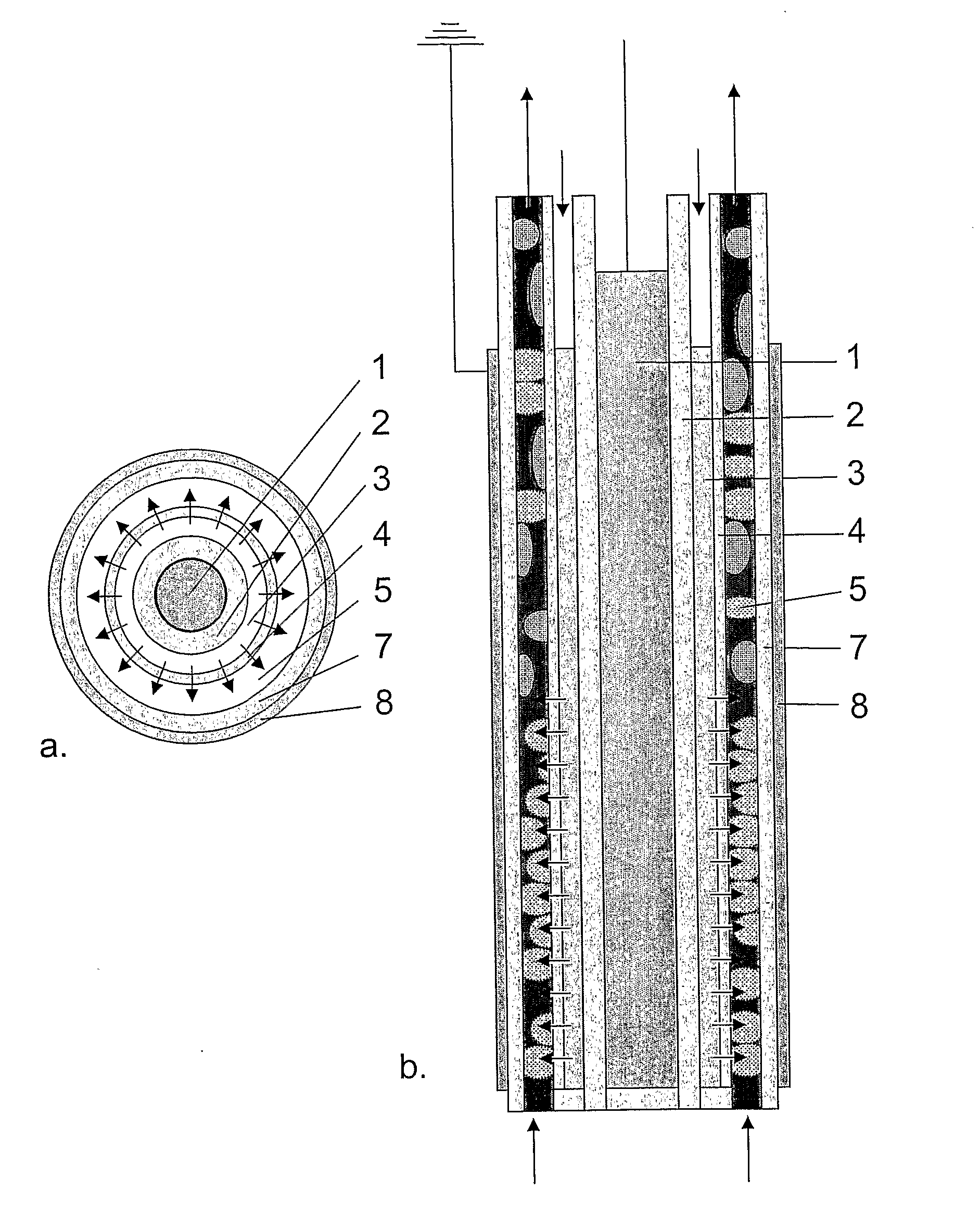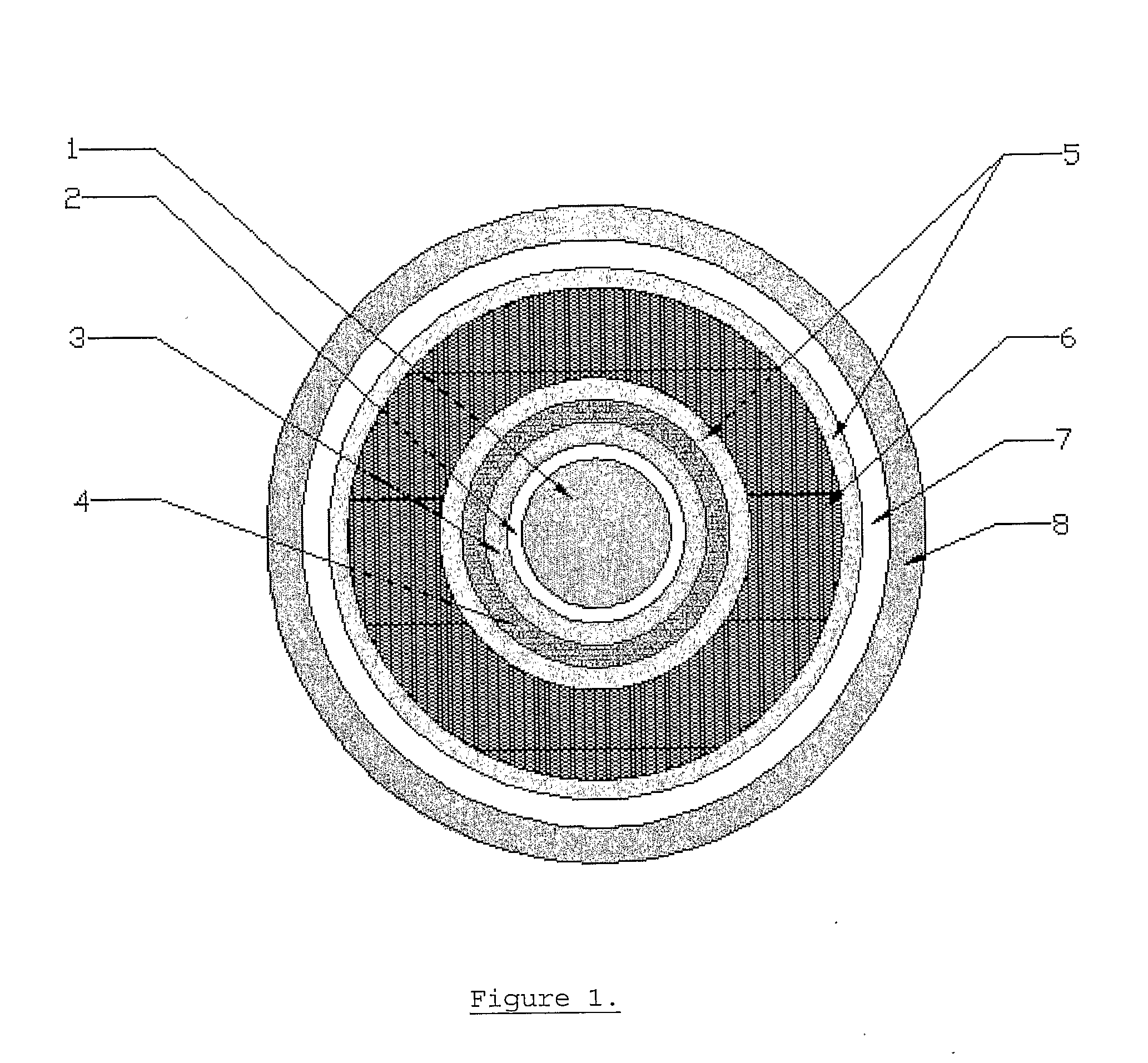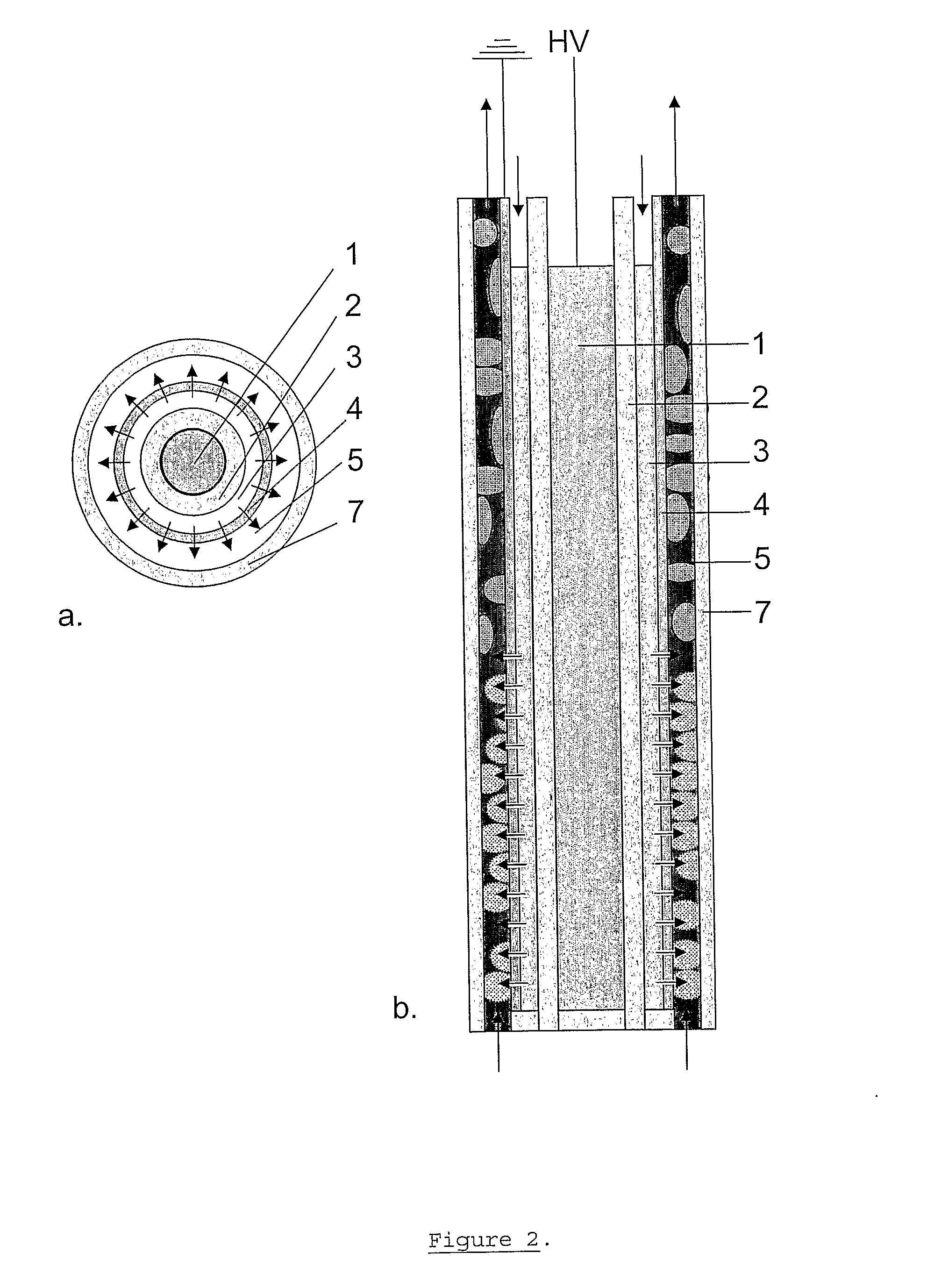Apparatus and Method for Purification and Disinfection of Liquid, Solid or Gaseous Substances
a technology of apparatus and liquid, which is applied in the direction of disinfection, crystal growth process, energy-based chemical/physical/physico-chemical processes, etc., can solve the problems of hampered efficiency of agents in killing non-bacterial species, inability to achieve sufficient mixing of active species and liquid phase to be treated, and the inability to eliminate a wide variety of residual micropollutant species using these techniques
- Summary
- Abstract
- Description
- Claims
- Application Information
AI Technical Summary
Benefits of technology
Problems solved by technology
Method used
Image
Examples
Embodiment Construction
[0022]The invention is related to an apparatus for disinfection and purification of a medium comprising a liquid, gaseous or solid phase, or a mixture thereof, and to a method performed with said apparatus, in which plasma is generated under atmospheric conditions in a first medium which is preferably a gaseous phase, such as e.g., air, which is then introduced by injection into a second medium, which is preferably a liquid phase, such as e.g., water, in such a way, that a mixing flow between the first and the second medium is established and the plasma is utilized to disinfect and purify the first and / or the second medium.
[0023]FIG. 1 shows a cross-section of a first embodiment of the apparatus of the invention, hereafter also called a reactor, having a tubular geometry. Other geometries are equally possible, however, such as the planar (flat panel) geometry shown in FIG. 6-9. The geometries of FIGS. 1-6 are symmetric, comprising a central round or flat electrode surrounded by a nu...
PUM
| Property | Measurement | Unit |
|---|---|---|
| breakdown voltage | aaaaa | aaaaa |
| voltage | aaaaa | aaaaa |
| area | aaaaa | aaaaa |
Abstract
Description
Claims
Application Information
 Login to View More
Login to View More - R&D
- Intellectual Property
- Life Sciences
- Materials
- Tech Scout
- Unparalleled Data Quality
- Higher Quality Content
- 60% Fewer Hallucinations
Browse by: Latest US Patents, China's latest patents, Technical Efficacy Thesaurus, Application Domain, Technology Topic, Popular Technical Reports.
© 2025 PatSnap. All rights reserved.Legal|Privacy policy|Modern Slavery Act Transparency Statement|Sitemap|About US| Contact US: help@patsnap.com



